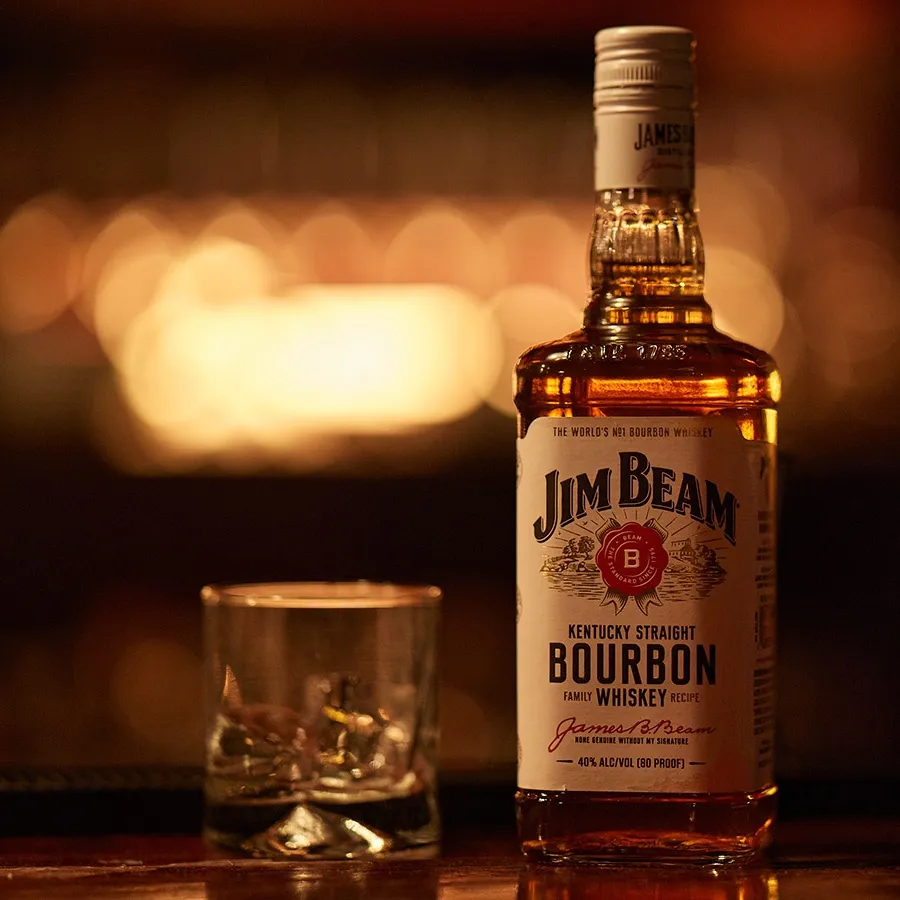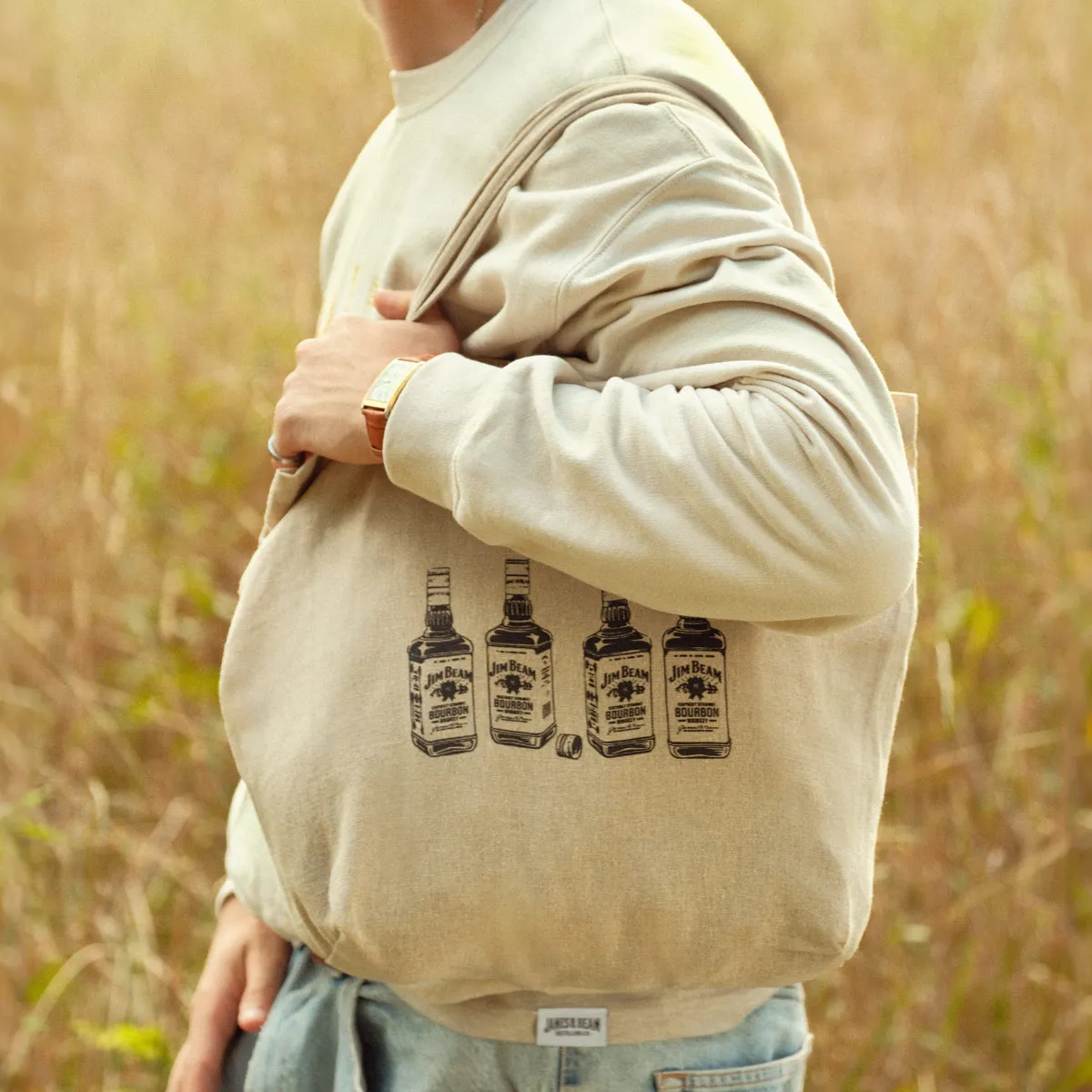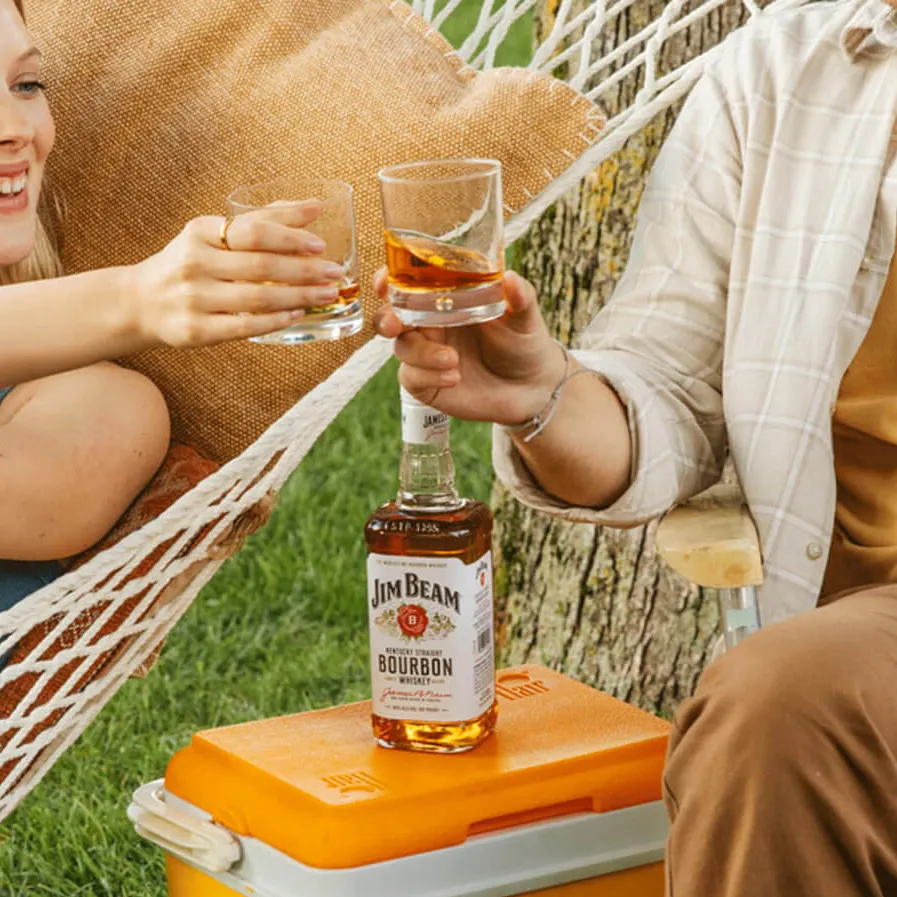


Jim Beam encourages responsible drinking. Alcohol should be consumed in moderation. By entering this website, you are agreeing to our Terms and Conditions, Privacy Policy, and Cookie Policy.
*Must be legal drinking age to enter this site.
Our Bourbon Making
Process

It's not just a process, it’s a 225-year tradition
To us, making bourbon has never been a job—it’s an art. Every ingredient, every shift in the weather and every oak stave blend together to make JIM BEAM the world’s #1 bourbon. Here’s a crash course on how it’s done.
Begin with a mix of corn (at least 51%), rye and malted barley. We like to call it our “mash bill.” This feeds into a 10,000-gallon cooker where we add some “setback” (a bit of old mash from our last distillation) for consistency and transform our mash into “sour mash.”


It’s no coincidence that 95% of all bourbon comes from Kentucky. You see, Kentucky’s limestone-filtered water contributes to the flavor and appearance of our bourbon. This helps to craft the slightly sweet, golden-brown bourbon we all know and love.
Once cooked, our sour mash goes to the fermenter, where it gets cooled and yeast is added to eat sugars and create alcohol. But not just any old yeast—the same strain we’ve been using since Prohibition ended. It’s a closely guarded family secret—so guarded, in fact, that Jim Beam himself would take home a jug of yeast every weekend for safe keeping. A tradition his great-grandson still upholds today.


After fermentation, we’re left with “distiller’s beer” that gets heated to around 200°F—enough to turn the alcohol to vapor, separating it from the other ingredients. That vapor then turns back into a 125-proof liquid or “low wine” that flows into a doubler (similar to a pot still) for a second distillation. The next time the vapor condenses, it will be a less-than-160-proof “high wine.”
The wood whiskey ages in has a lot to do with its final flavor. At Jim Beam, we tap our high wine into brand-new, level-4 char, American White Oak barrels. We call this “alligator char” because, after being fired, the inside of the barrels have the bumpy look of a gator’s skin. This also caramelizes the sugars within the wood to create a richer flavor with fewer tannins.


After filling our barrels, we roll them into our airy rackhouses to rest. As the seasons change, the charred-barrel wood expands and contracts, allowing bourbon to extract its caramelized sugars, oak flavor and golden-brown color. According to U.S. law, two years gets you Straight Bourbon Whiskey. But four years gets you the smooth, mellow flavor of Jim Beam.



